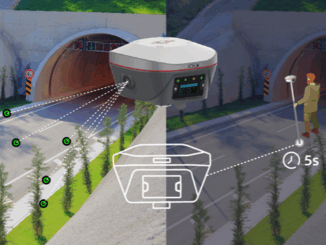
The Challenges
As a recent graduate (2013) of GIS training at BCIT in Burnaby in addition to an Honours Bachelor of Science degree at UBC-Okanagan in Kelowna, I find that students and recent graduates can struggle with making the bridge between academia and industry to become established in their careers. It’s certainly not a struggle unique to GIS and there are many factors involved, certainly one being location and demand for your particular skill set in the geographic region where you live. Having recently returned to Kelowna where the GIS job market is much slower than in the Lower Mainland, I recognize that continuing a GIS career is a challenge that really requires putting your name out for others to notice. I recently had a conversation with a local technology contact about how school does not adequately prepare students for industry that made me feel I should raise awareness about the subject and the challenges faced by many young people of Generation Y and soon Generation Z in starting and establishing technology-related careers once they’ve completed their schooling.
The most difficult time for recent graduates in any given field is the first few years of working in their field. The conundrum of needing to get a job to gain experience but needing experience to get a job is a very prevalent challenge, and although the Baby Boomer generation is retiring, a lot of the jobs that currently need replacing are those of senior positions. Hiring an inexperienced person requires time to train them and involves risk on the end of companies, and this can discourage companies from seeking recent graduates, despite the incentive of paying them lower salaries. Furthermore, every community has a different market and industry network and culture for a given field, so if a person relocates to a new place, especially in the first few years of working in their field, it can take time to establish a presence in the new setting. 
Prepared for School but Not Industry
One of the big problems for students and recent graduates is that they tend to become conditioned by the school system to get mentally boxed into specific fields and skill sets, as well as focusing most of their effort in achieving high grades–adaptations that help them to succeed in school but do not prepare them for industry. In industry, it is essential to have a broader mindset of one’s skill sets in order to adapt to our modern, fast-paced and changing work environments with changing demands, and the grades achieved in school often mean very little to potential employers. Because the school system is broken into specific programs with courses catered to those programs, and because school has a definite sequence and order of progression, students often tend to think that careers in their chosen field tend to have a single path and they develop a ‘ladder’ concept of a career–first you start at one step, then after that, you climb onto the next step, and so on. Getting mentally boxed in is a very common struggle for young people that begins at grade school, and opening one’s mind to the fact that career paths don’t follow a single ladder and have many possibilities and directions sometimes takes time to realize, often only with time and experience spent outside of school. As a result, many graduates don’t even know that their skill sets allow them to do much more than one specific career path they’ve mentally conceived based on their academic training. They often don’t even know all the doors and directions they can pursue with their skills.
How Canadian Schools and Industry Contribute to the Challenges
Certainly school systems are partly to blame for creating the academic focus and ladder mindset, particularly universities more than technical schools. The main emphasis that universities place is on high academic achievement, with much less focus or importance placed on preparing students for the fast-paced, unstable, and constantly changing job market that exists today. Professors sometimes provide students with external resources to industry and networking opportunities, sometimes to fulfill school requirements, but not much emphasis or importance is placed on these resources (outside of specific work placements like practica and co-op programs). Grades are still the measure of success and achievement for students, and from a student’s perspective, attending external functions without much incentive mean less study time and a possible compromising of grades. This results in most students not taking opportunities to connect with industry as seriously as they should. Universities have generally been run the same way for a very long time and their focus still continues to be on academia. Professors are often hired primarily as researchers with a secondary focus on teaching, and there is often very little information exchange between universities and industry.
This lack of school-industry communication creates another problem for students–programs offered at schools don’t always match the demand for specific skill sets in industry, leaving students to choose their area of study at their own risk. As long as enough students sign up for a program and there is someone to teach it, it will be offered, but it doesn’t necessarily lead to work down the road. In this regard, universities (at least in North America) are run as businesses with less concern on preparing students for the ‘real world’. Students are left to do their own research about work demand in their field but often are inadequately informed and don’t develop a clear picture of what to realistically expect in that particular field after finishing school. This gap between school and industry often leads to people with bachelor degrees working in completely unrelated jobs where they are not making use of their skills or abilities at all.
Human Resources departments at technology-related workplaces are also partly to blame for a mismatch between skill sets and jobs. Often, HR staff aren’t fully aware of the day-to-day nature of a job position, and when industry professionals familiar with the job are not involved in the hiring process, a candidate’s potential may be missed depending on the questions asked during job interviews and the hiring process as a whole.
Maintaining a Positive Outlook
These ongoing challenges require young people to adapt to today’s demands, as well as academic institutions and industry to step up and be willing to change the way they do business to help bridge the gap between school and industry and help young people succeed in today’s market. It certainly takes time for big changes to happen, but small efforts made over time can make a big difference. All these problems are resolvable but require investment from school and industry in students, who will be meeting the GIS industry needs of tomorrow. See a related article, “Career Strategies for Students and Recent Graduates,” for more discussion on ways to address these issues.





Be the first to comment